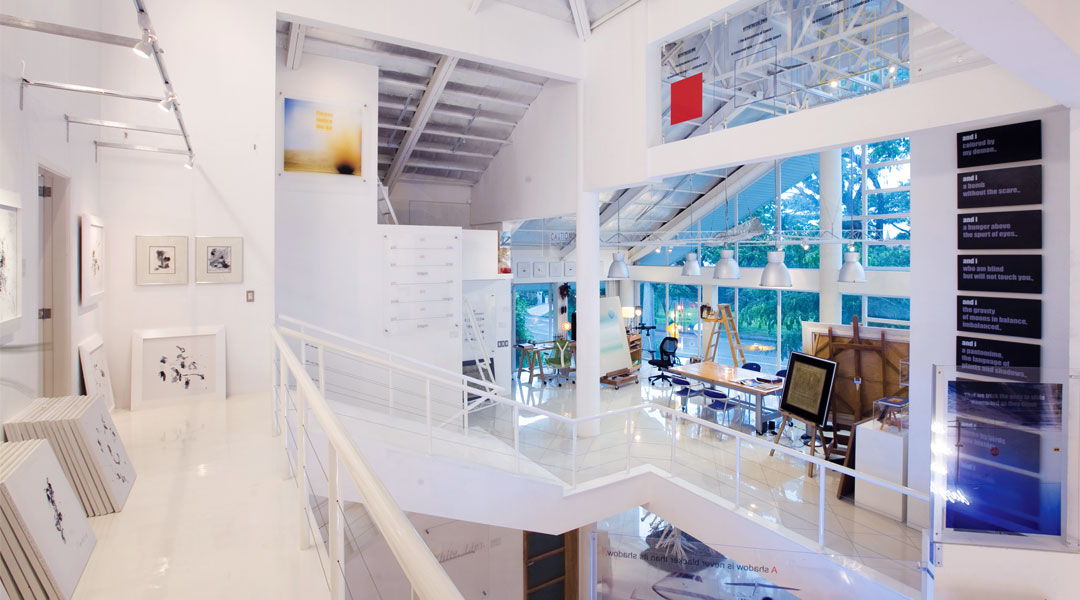
The Syjuco ArtLab, an avant-garde living space and werkstätte
Communal living among like-minded artists has a distinguished tradition. Medieval monks toiled together in monasteries, writing and illuminating manuscripts. Artist-colonies sprang up in the 19th and early 20th centuries based on national styles, such as the English Pre-Raphaelite Brotherhood and the Arts and Crafts Movements.
The Viennese Secession and Werkstätte Movements are of particular note as well, having brought the world paintings, jewelry, ceramics, and furniture of a distinct style and character. Perhaps the most famous is the German Bauhaus Movement from 1919 to 1933, where Modern masters like Wassily Kandinsky, Walter Gropius and Marcel Breuer lived and made art together in a campus environment, and taught master classes to aspiring artists.
A close approximation of the artists’ colony in the contemporary Filipino sense can be found in a sedate and unobtrusive corner of Ayala Alabang. The Syjuco ArtLab is the brainchild of the husband-and-wife artist team of Cesare A.X. Syjuco and Jean-Marie Ricafort-Syjuco.

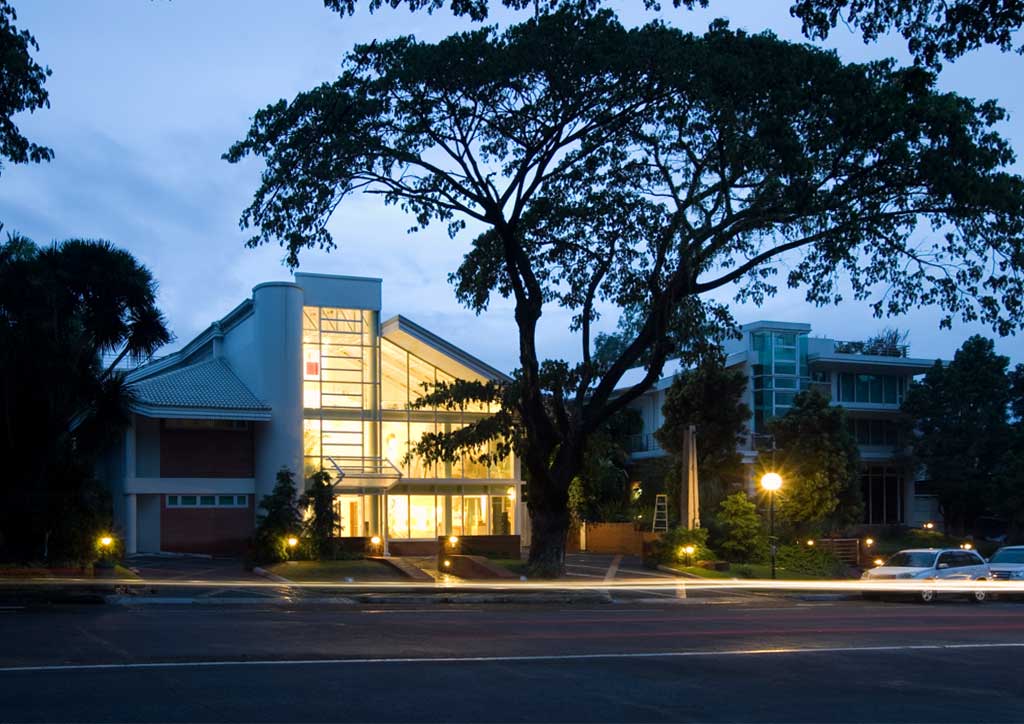
Originally founded in the old Syjuco compound along EDSA, Makati, in 1990, it was conceived as one of Manila’s earliest artist-run spaces. Artworks were made in individual studios within ArtLab, and collaborative projects in visual art, music and theater were attempted, guided by the avant-garde aesthetics of the Syjucos (Cesare being an inherently precocious writer and artist, and Jean-Marie a painter and performance artist).
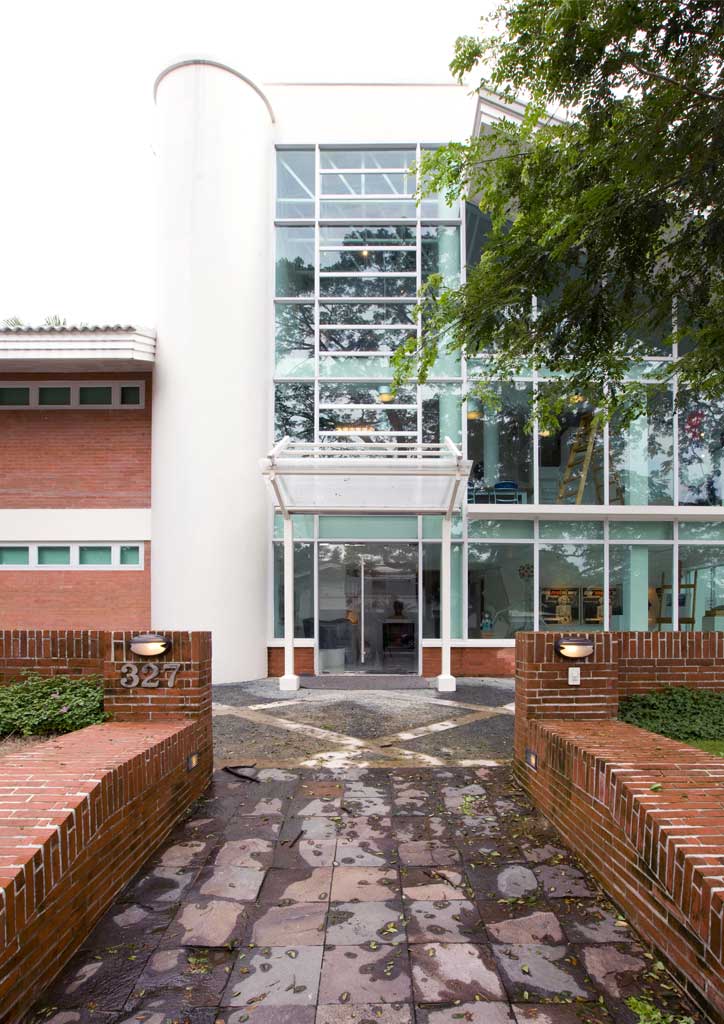
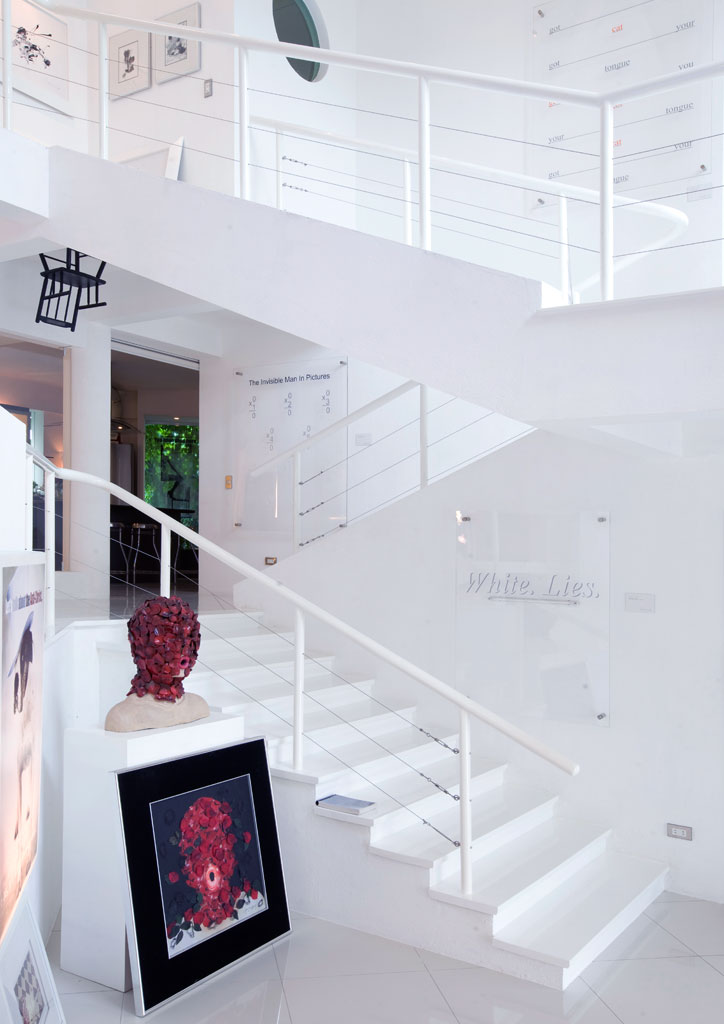
Because of the nightmarish traffic at EDSA and the South Superhighway, the couple eventually moved ArtLab to their Alabang house, which they call BrightHouse. The need to bring up their children in the peace and quiet of Alabang, while working on their art, convinced the couple to stick within the village. A multiplication of talent ensued—their three eldest daughters, Maxine, Michelline and Trixie, and eldest son, AJ, are immersing themselves in the arts as well.
READ MORE: See Napoleon Abueva’s Gothic “chapel” workshop
A separate set of studios where each Syjuco family member can work in peace, while being just a few steps away from BrightHouse, thus became a necessity. In 2010, the Syjucos bought the neighboring house standing on a 1,000-square meter property, and hired Architect Jae Narciso to transform it into their new ArtLab.
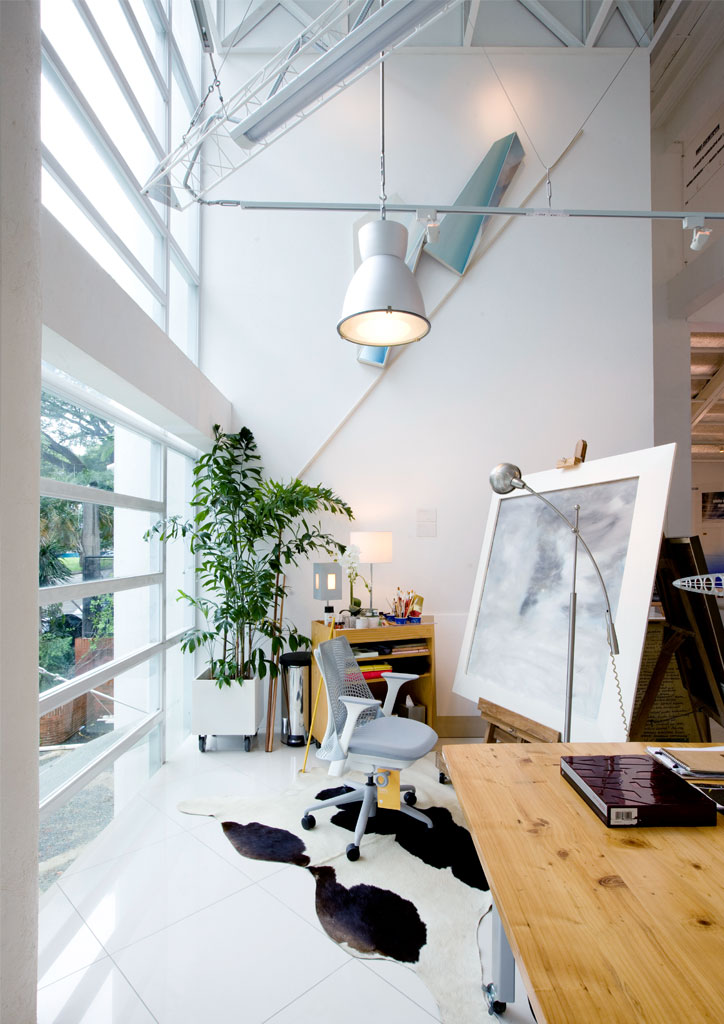

Narciso’s plan was to follow in the footsteps of the construction of BrightHouse; namely, to “recycle” an existing house and limit structural changes, to keep waste at a minimum. “Cesare loves industrial materials,” says Narciso. “The primary design objective (he) desired was to express the materials used as they are, to let the aluminum be aluminum, the brick, brick, the steel, steel.” By pursuing this sustainable approach and expression of industrial material, ArtLab becomes the other half of BrightHouse, albeit a more pristine one owing to its whitewashed appearance.
Completed in February of this year, the Syjuco ArtLab has since served as the main studio spaces of Cesare, Jean-Marie and Maxine, with special exhibition rooms for Michelline and Trixie. The three-storey, Modernist barn-like structure houses exhibition spaces, painting studios, a guest room with a music studio and, just a few steps away, the “his-and-hers” painting studio nooks of the couple with a magnificent glass curtain view of the street in front. A bedroom suite for Cesare, complete with its own working studio and bath, is on the third floor. A rear-side annex faced in brick was also added to provide studio spaces for the three daughters, plus a separate painting and restoration studio for Jean-Marie.
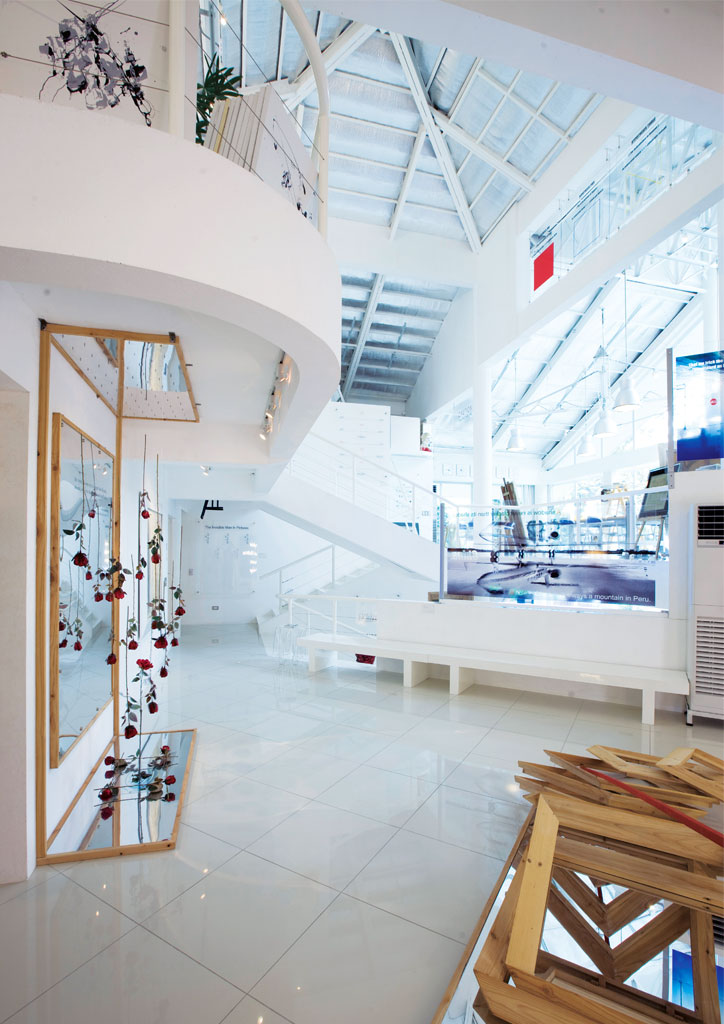

Meant not only as an artistic studio, the Syjuco ArtLab is also a place for entertaining visitors and friends by providing each space with a marvelous series of works that highlight the Syjuco’s combined artistry. The multiple interests of each family member were accorded their own special corners and walls.
It is the guiding hand of Cesare, however, that coordinates and “conducts” these forces into a masterful symphony of contemporary art. Known for producing a wide range of highly conceptual works since the 70s, Cesare’s Literary Hybrids, which he has been creating since 2005, are the mainstays of the Syjuco ArtLab’s interior décor. Clever puns, reworked proverbs and rhetorical flourishes filled with irony, all printed on backlit acrylic panels with background graphics, enliven the main living and exhibition spaces and the whitewashed walls all the way up to the ceiling.
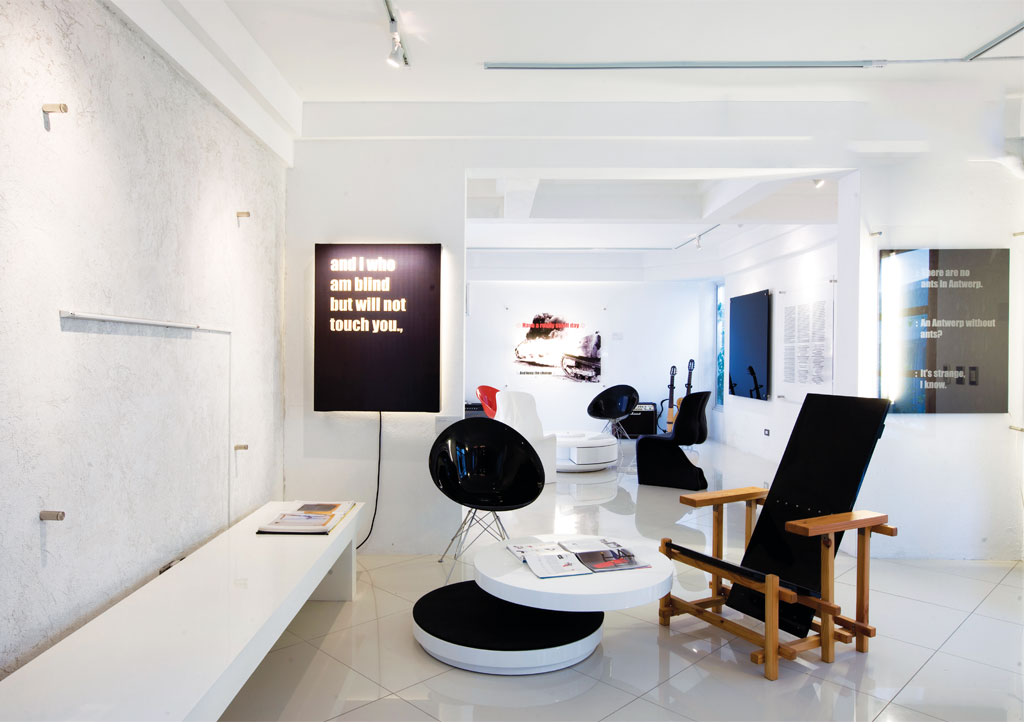
Surreal and jarringly avant-garde, the Literary Hybrids’ use of acrylic panels, black, white and red color contrasts, light boxes and elegant typography exemplify a new wave of Modernist mixed media installations (popularized by the American artist Barbara Kruger) that uses advertising and popular culture as its references. The Syjuco ArtLab becomes a sort of high temple dedicated to this premise. Its clean lines and surfaces are reflected in the structure’s predominant use of whitewashed walls, silver ceiling thermal shielding and the transparency of glass curtain walls. All these elements create a unifying effect: a kind of haute moderne sensibility rooted in European modern design and aesthetics.
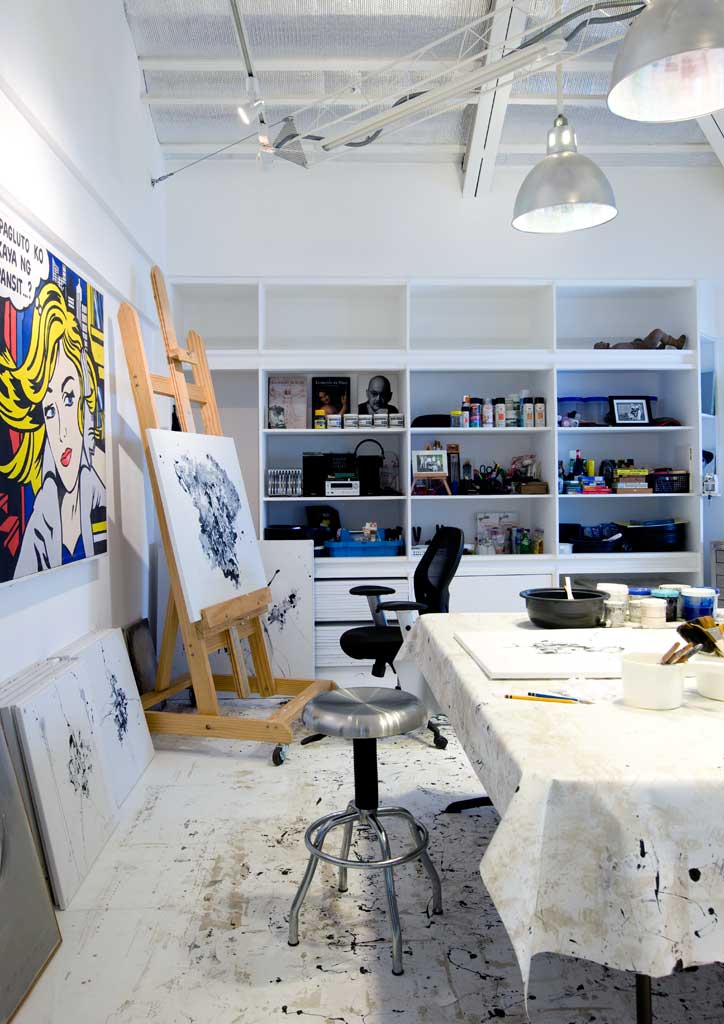
Diagonal levels in the main interior progress from the ground floor up to the third floor, creating a progression of spaces from where the Literary Hybrids can be best seen as one moves from one floor to another. Every movement or transition reveals different rooms that showcase the works of the other family members. This movement starts from the vestibule gallery, where a large tree installation by Maxine stands tall and is surrounded by more of Cesare’s and Jean-Marie’s work. This gallery then branches out to a display room dedicated to Michelline’s handmade jewelry. Even the public toilet nearby houses one of Jean-Marie’s installations.
At the second floor sala and kitchen, seats reproduced from classic Modern designs and genuine Philippe Starck chairs intermingle with Cesare’s music equipment, his Literary Hybrids and Jean-Marie and Trixie’s permanent video installations. Finally, the third floor bedroom studio of Cesare climaxes the movement from the hybrids to his recent abstract paintings in black and white.
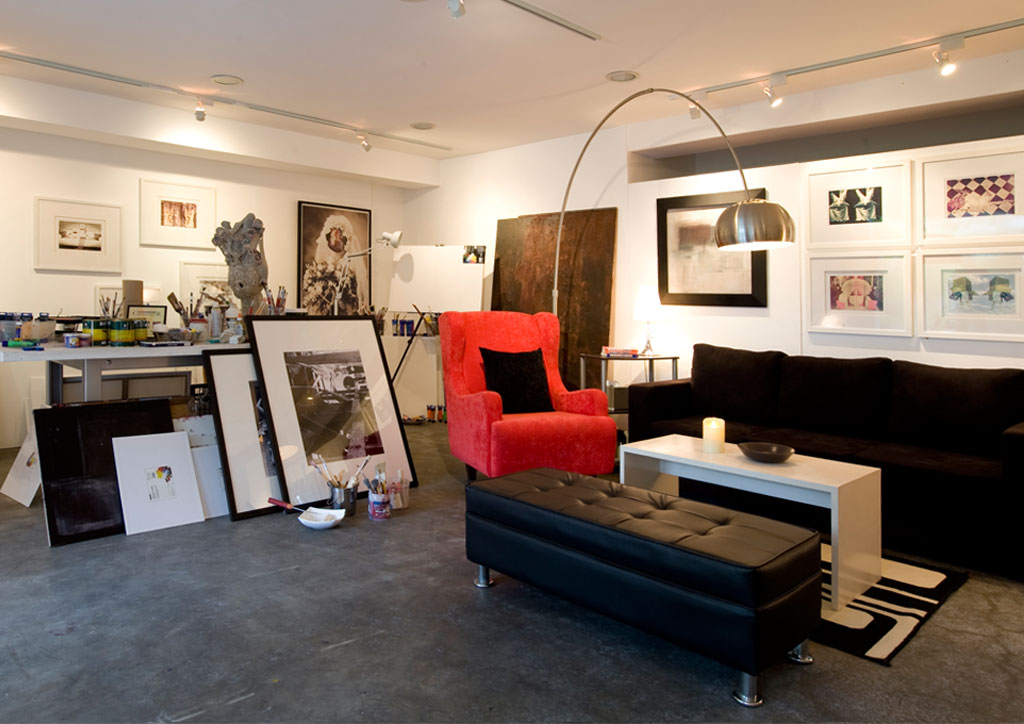
With occasional art students being coached by Maxine, and the ongoing documentation of older works by Cesare and Jean-Marie, it is no small wonder that the Syjuco ArtLab attracts attention for being both domicile and art “workspace.” Domestic living and a full-time occupation of making art for this family, after all, is its central bond, and the reason for ArtLab’s longevity. ![]()
This article first appeared in BluPrint Vol 6 2013. Edits were made for Bluprint.ph.



